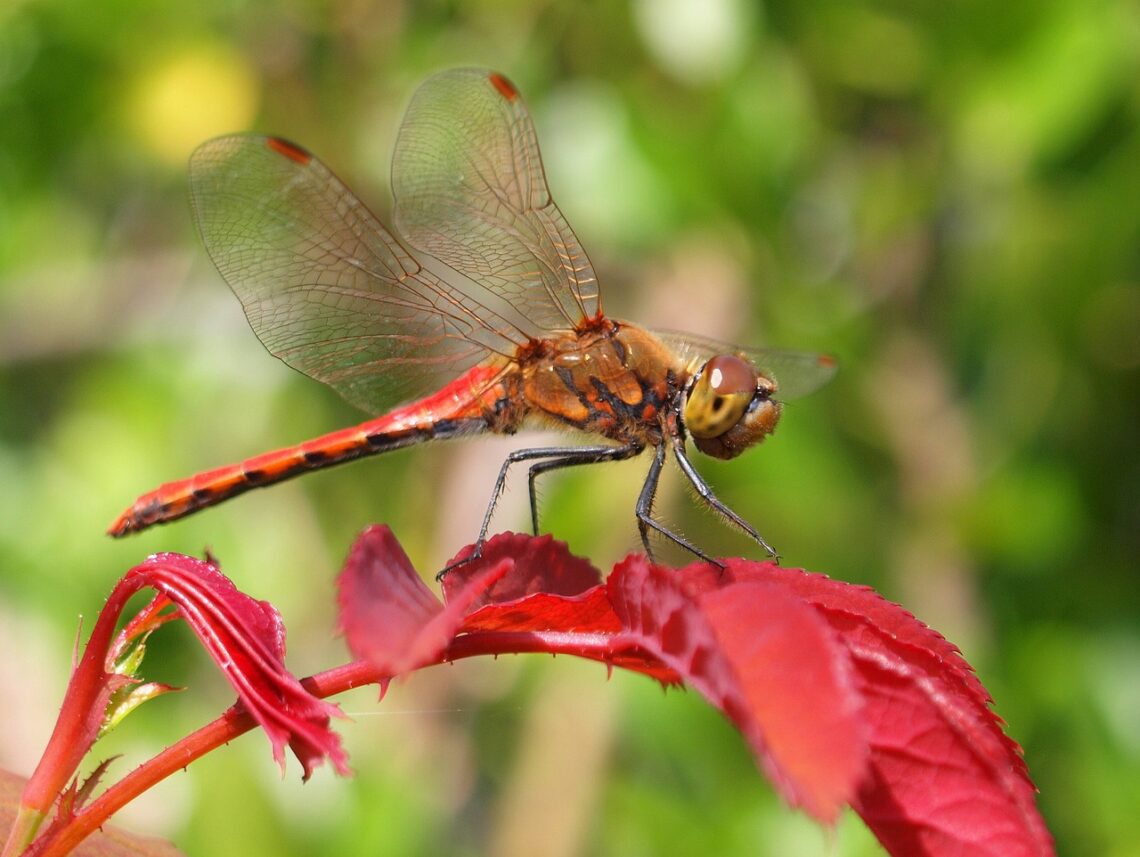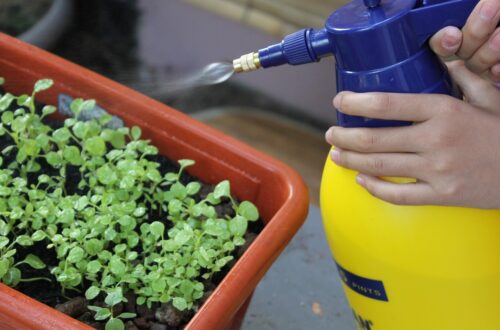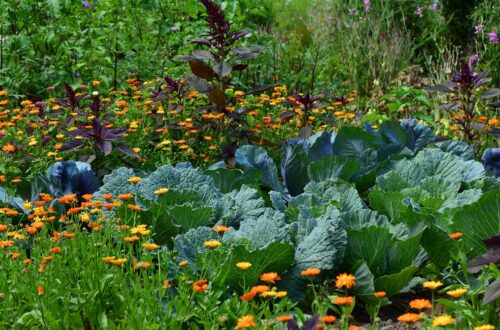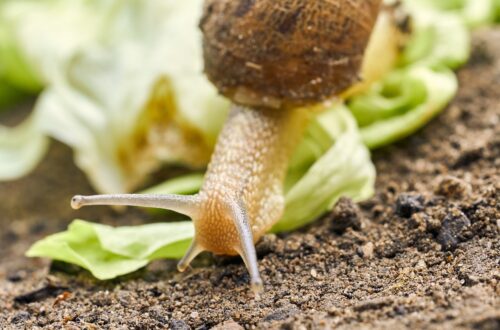Find out how to attract dragonflies and control mosquitoes and other garden pests the natural way!
Dragonflies (and their smaller counterparts, damselflies) are some of the most distinct looking insects around. Their wide, flat wings look a bit like the propellers of a helicopter and their long, aerodynamic bodies propel them through the air at tip-top speed.
But while dragonflies are certainly fun to watch as they flit and flutter about gardens, they’re also handy insects to have around… especially if your garden is plagued with mosquitoes! If you want to see more dragonflies and damselflies this summer, read on for easy tips on how to attract a dragonfly population, the best plants to grow for dragonflies, and much more.
Affiliate disclosure: As an Amazon Associate, I may earn commissions from qualifying purchases.
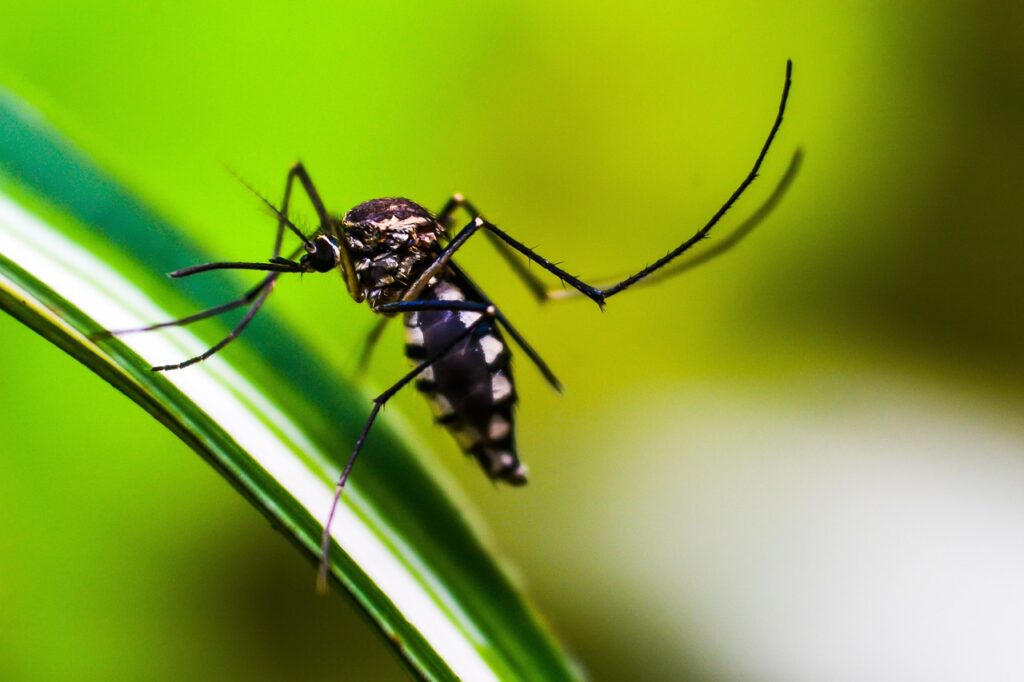
Why Attract Dragonflies?
Dragonflies and damselflies are predatory insects that help keep gardens pest-free by gobbling up an assortment of flying pests — including winged aphids, midges, gnats and small flies. Even better? Dragonflies are particularly fond of eating mosquitoes!
There’s nothing worse than getting loads of mosquito bites when you’re sitting in your garden on a warm summer night. But studies have found that a single dragonfly can eat hundreds of mosquitoes a day and dragonfly larvae also eat baby mosquitoes in ponds and other water features. If you have a habitat garden that attracts dragonflies, just imagine how many mosquitoes they’ll devour without you needing to do a thing!
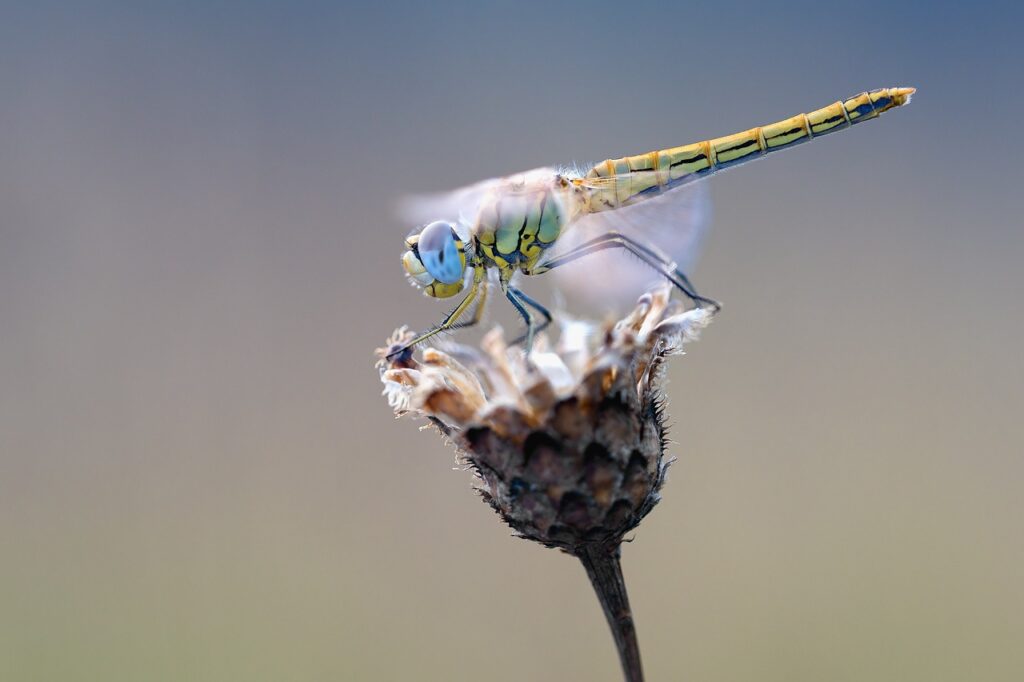
Fun Facts About Dragonflies!
- Dragonflies are incredibly ancient critters and they actually evolved before the dinosaurs!
- Thanks to their mosquito-munching prowess, dragonflies are also called “mosquito hawks.”
- Dragonflies catch up to 95% of the prey they target, making them one of the most accurate and successful predators on the planet.
- They also have 360 degree vision. All the better to spot mosquitoes with, methinks!
- Dragonfly larvae are aquatic and they spend up to 5 years in water before transforming into adult dragonflies.
- Studies have found that dragonflies can fly up to 60 mph!
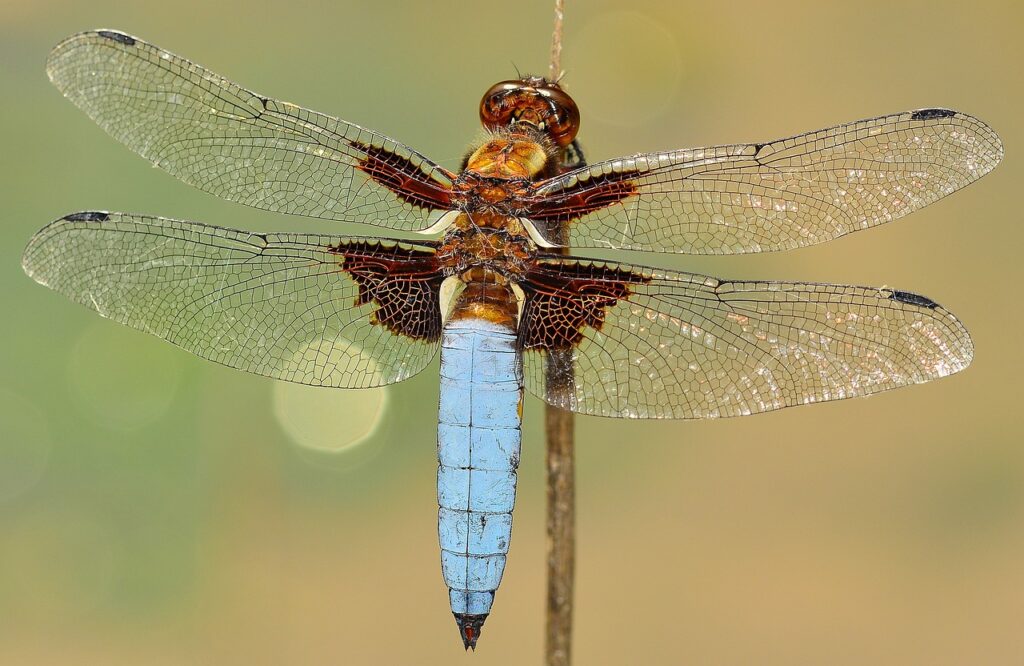
How Do I Attract Dragonflies?: 5 Tips to Know
If you want to see more wildlife in garden spaces, it’s important to make your garden as attractive to the critters you hope to attract. And when it comes to dragonflies, adding a water feature and growing plants that attract dragon flies are at the top of the list. Include as many of the gardening tips below in your outdoor space and see how many damselflies and dragonflies come to visit your garden this summer!
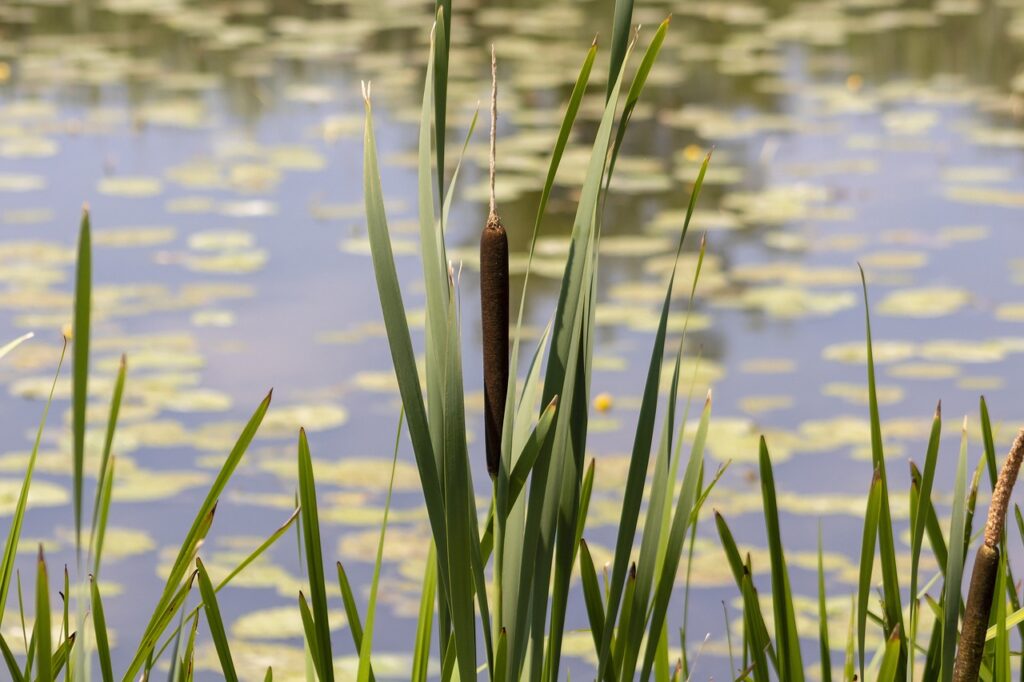
1. Add a water feature.
Dragonflies and damselflies lay their eggs in water and their larvae spend months to years maturing in lakes, ponds, and streams. So if you’d like to attract these beneficial insects to your property, you’ll want to install a water feature first.
You don’t need to get super fancy with your water feature and you definitely don’t need a large pond to lure dragonflies in (dragonflies naturally flock to a soggy part of my yard!) A small pool with shallow edges and a depth of around 2’ at the center will work quite well for dragonflies. Plus, pools of this depth are less attractive to mosquitoes who prefer to lay their eggs in shallow water.
You can create a small pool yourself, or use a pre-molded pond liner. Some dragonflies prefer moving water, while others prefer a calmer environment, so be sure to research the preferences of your native dragonflies. And remember… adding a bubbler or small solar powered fountain can make water features less appealing to mosquitoes!
Tip: Adding submerged stones to your water feature will give dragonfly larvae a safe place to hang out!
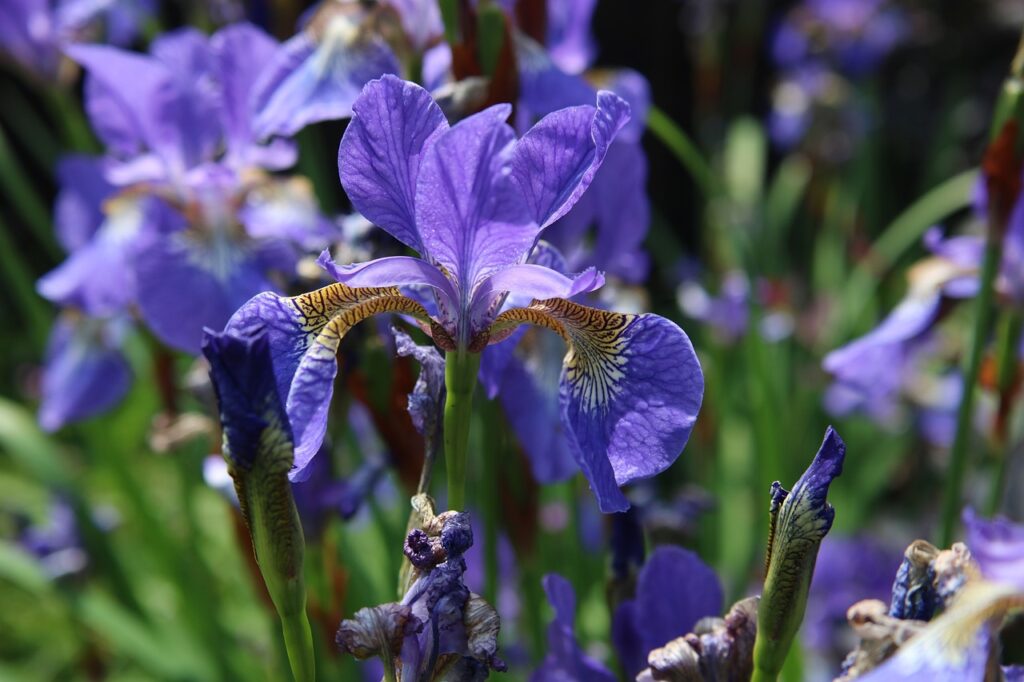
2. Grow plants that attract dragonflies.
When it comes to what attracts dragonflies, plants are essential! Adult dragonflies use plants for perching and hunting, but the right plants can also provide a sunning spot and a place for dragonfly larvae to metamorphose into adults.
Variety is, as they say, the spice of life… and variety is also super important when choosing plants for dragonflies. For best results, choose fully aquatic plants that will provide shelter for dragonfly larvae, as well as semi-aquatic or floating plants where larvae can perch while transforming into adults. You’ll also want some marginal plants to grow along the sides of your water feature where dragonfly adults can hang out, watch for prey and snooze!
While there are lots of plants that can be used to accentuate your dragonfly habitat, some excellent, water-loving plants to try include:
- Tall, native grasses, reeds, and rushes
- Buttonbush
- Cardinal flowers
- Joe Pye weed
- Swamp milkweed
- Cattails
- Blue flag iris
- American white waterlily (can become invasive in some Western states)
Tip: Some common pond plants, like water lettuce and some species of water lilies, have a high level of invasiveness. If you choose to use these plants, make sure your pond is far away from natural bodies of water and dispose of plant debris properly to avoid spreading invasive plants into waterways.
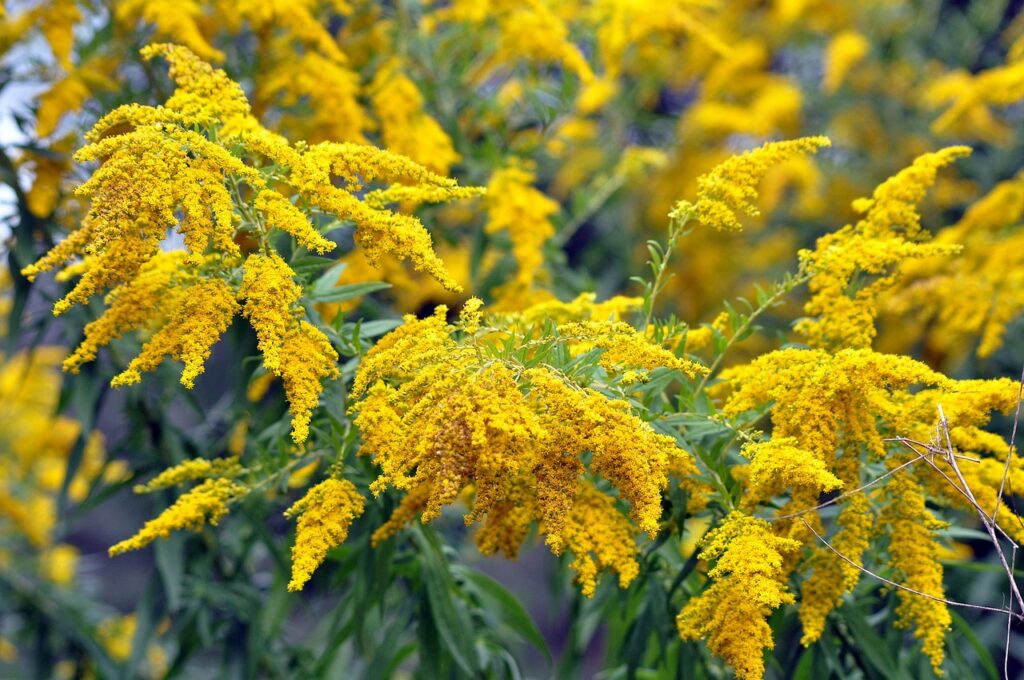
3. Plant nectar-rich plants too.
Dragonflies will happily chow down on mosquitoes, but they’ll also eat other small, flying insects. Growing nectar- and pollen-rich plants near your water feature can attract insect prey and provide a ready source of food for your dragonfly friends.
Different flowers attract dragonflies and their prey, but the plants below are known to be insect magnets:
- Coneflowers
- Black eyed Susan
- Ironweed
- Meadow sage
- Buttercups
- Plants in the carrot family (such as flowering dill, parsley and cilantro)
- Alliums, including chives
- Asters
- Goldenrod
Tip: Goldfish make colorful additions to outdoor ponds, but they’re not great for dragonflies. If your goal is to attract dragonflies, don’t stock your pond with goldfish or other fish.
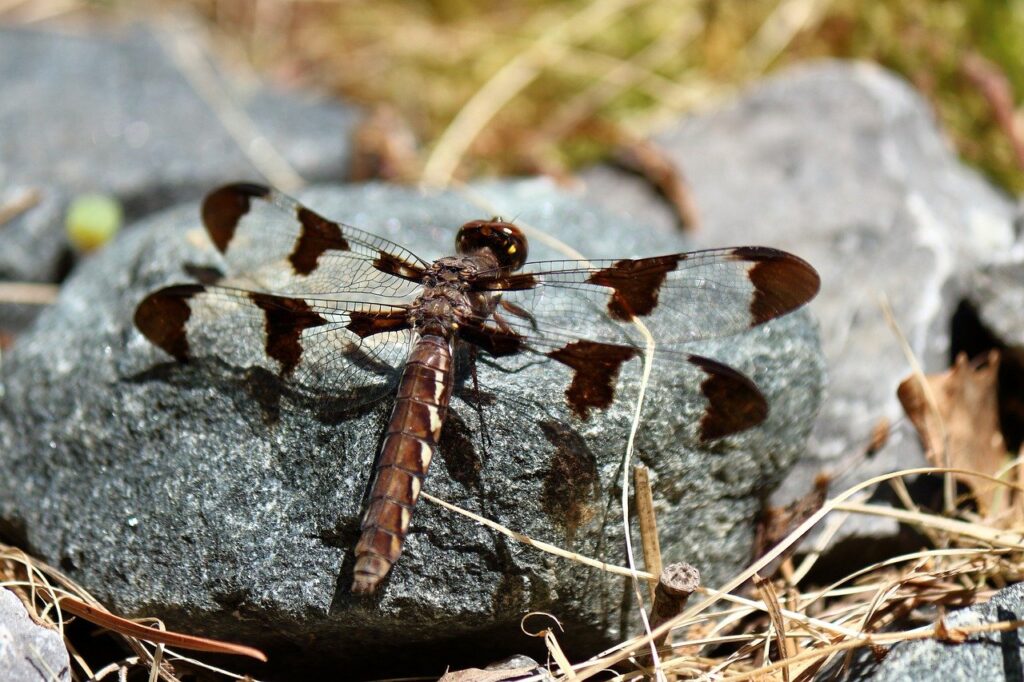
4. Install a sunning spot.
Dragonflies need to warm up in a sunny area to fly and they appreciate a good sunning spot as much as cold-blooded reptiles do! Placing large, flat stones near your water feature can provide the perfect area for dragonflies to rest and sun themselves while they’re hunting for insect prey.
For even better results, install your pond in a sunny area that receives at least some sun at midday!
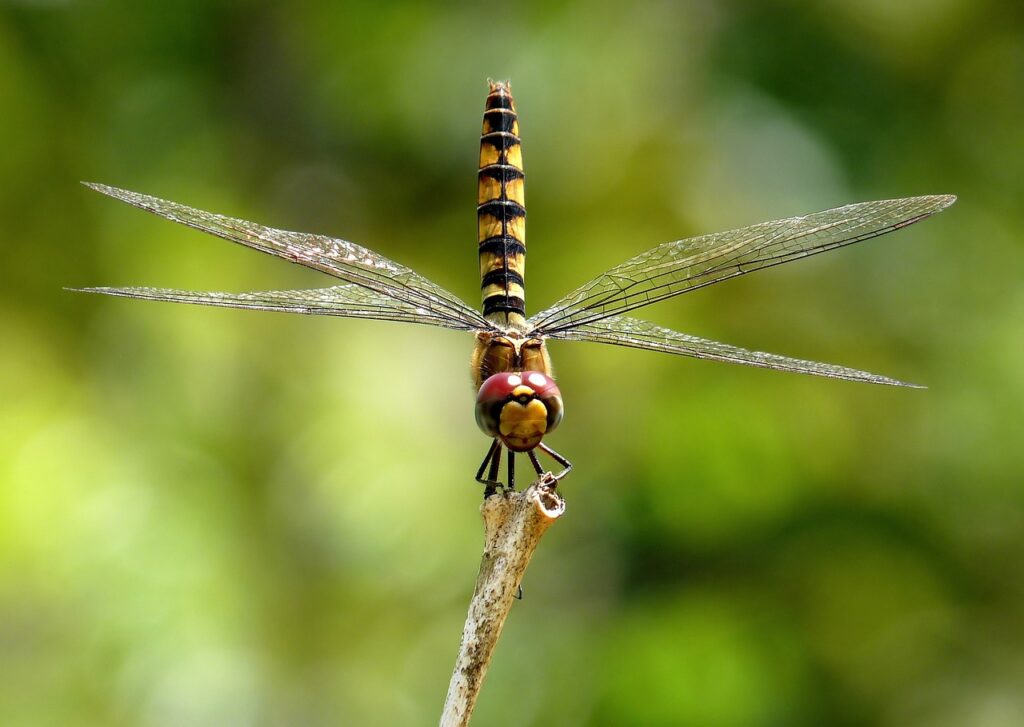
5. Go organic.
Knowing what attracts dragonflies is just one part of growing a dragonfly garden. But you’ll also want to ensure that your outdoor space is safe for dragonflies to visit. And that means keeping pesticide use to a minimum!
Most pesticides don’t differentiate between pest insects and beneficial bugs and spraying gardens for pests can inadvertently harm dragonflies, butterflies and bees too. But there are ways to keep gardens pest-free without using chemicals!
Crop rotation, companion planting, floating row covers, fruit protection bags and a good garden cleanup can do wonders for controlling pests. But if you do need to treat plants for insects, choose less damaging, organic pest control products, like insecticidal soap sprays, and only apply these products to plants that aren’t in flower or near dragonfly pools.
Tip: Bug zappers and sticky traps can also harm dragonflies. If you want to see more dragonflies in your garden, you may want to remove these products as well.
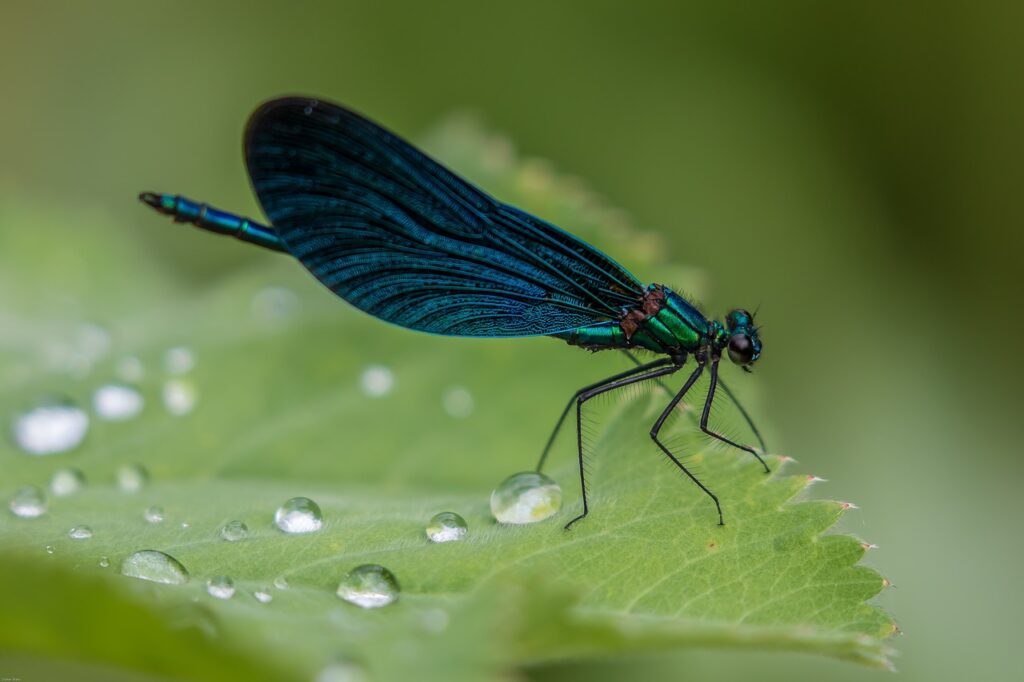
How Do You Attract Dragonflies and Other Frequently Asked Questions
How can I attract dragonflies to a small space garden?
Creating a small water feature and growing a few tall grasses and nectar-rich plants is the best way to attract dragonflies to a small garden. If you have the space for it, add some floating plants and a sunny rock for perching too!
What is the difference between a dragonfly and a damselfly?
Dragonflies are bigger and bulkier than damselflies, and they also fly a bit faster. Dragonflies and damselflies are both predatory insects, but they don’t sting or have stingers.
Are dragonflies good for your garden?
Yes they are! Dragonflies will feed on many common garden pests and help keep flower beds and vegetable gardens naturally pest free. Dragonflies are also environmental indicators and they occur in clean areas with quality water.
